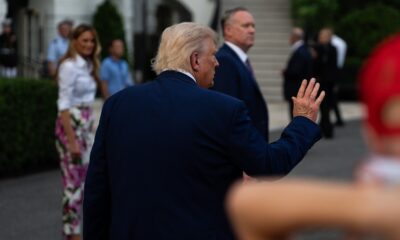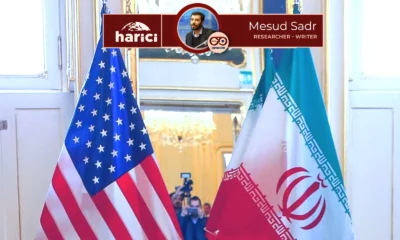Asia
Iran to Pakistan: Shun harboring Jaish al-Adl or expect more missiles
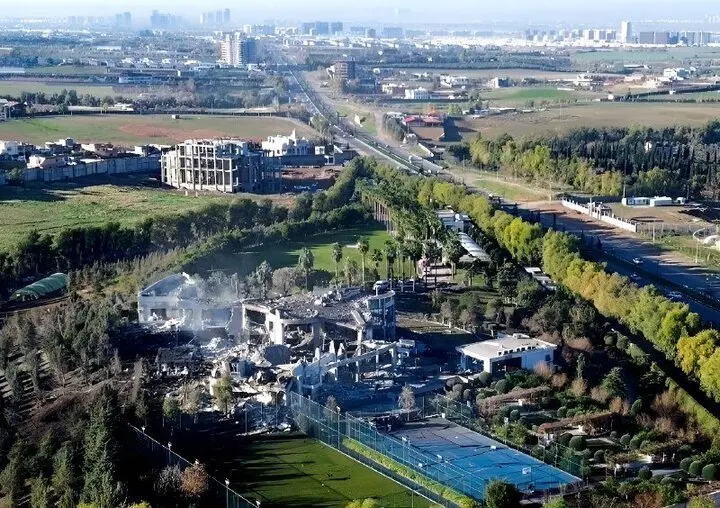
Iran and Pakistan have been at odds for many years, especially after the 2019 bombing that killed a large number of Iranian guards. In that time, a commander of Iran’s elite Revolutionary Guards, Major General Mohammad Ali Jafari urged former Iranian president Hassan Rouhani to give the Islamic Revolutionary Guard Corps (IRGC) more freedom to act against Pakistan for harboring and feeding the Jaish al-AdI extremist who claimed responsibility for the attack that killed 27 Revolutionary Guards.
The group Jaish al-AdI, or the Army of Justice, was formed 12 years ago and has been largely at loggerheads with Iran and frequently carried out attacks in bordering areas to target its soldiers and bombings inside the cities.
Iran claims that Jaish al-AdI was backed by Pakistan with the support from Saudi Arabia amid attacking Iranian guards. Jafair, who was briefing the gathering at Iranian city of Isfahan, said that the government of Pakistan must pay the price of harboring terrorist and separatist groups, including Jaish al-AdI.
In that time, he also warned that Tehran will no longer wait for any procedures rather than act directly to counter such attacks. He didn’t stop here as he went further and blamed Pakistan’ army and its intelligence agency Inter-Services Intelligence (ISI) for sheltering the perpetrators of the deadly attack in Iran.
In 2019, the then Iranian president Rouhani and former Pakistan Prime Minister Imran Khan, who has been put behind bars by the military establishment over a corruption scandal, had spoken on the phone, where Rouhani demanded Pakistan to act strongly against anti-Iranian terrorist groups.
Referring to his country’s perpetual enemies, Israel and US, Rouhani told Khan that Pakistani soil should not be used against Iran and Islamabad should not let Iran’s enemy use Pakistan land and get shelter there.
Actions have taken though five years later
Though it took five years, Iran’s missiles finally struck bases of Jaish al-AdI in Pakistan’s southwest Balochistan province, and the attack worsened the already-strained relations between Tehran and Islamabad. The attack, which Pakistan called an “unprovoked violation of its airspace” comes days after deadly bombing in Iran that took the lives of dozens of people.
Iranian state media reported that two bases of Jaish al-AdI in Pakistan were targeted by missiles on Tuesday. No more details were given, but the attack comes a day after the IRGC attacked targets in Iraq and Syria with missiles.
Meanwhile, Pakistan has “strongly” condemned the attacks, labeling them as an “unprovoked violation of its airspace”. A statement from Pakistan’s Foreign Ministry said that two children were killed and three girls received injuries in the incident.
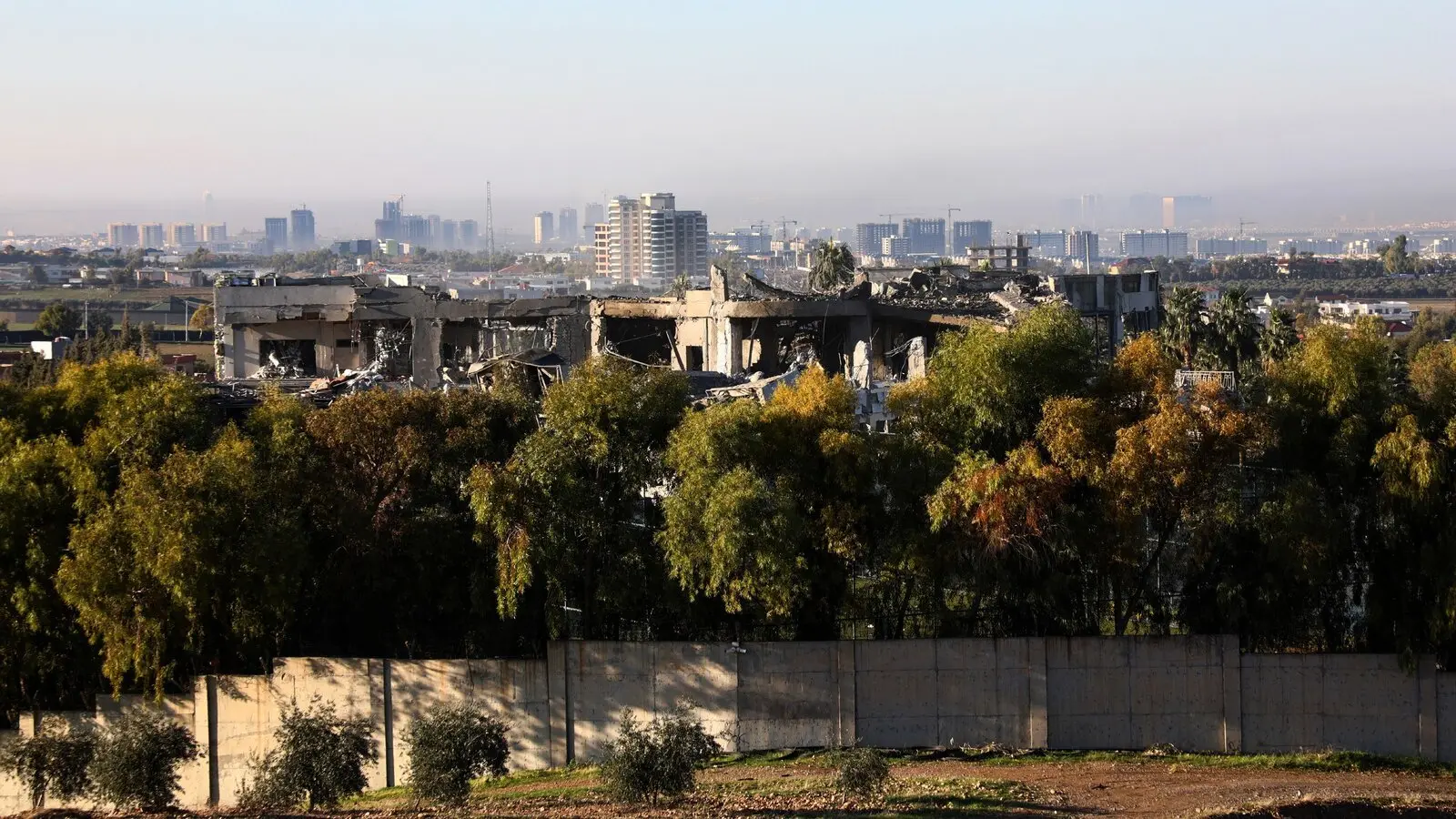
The attack in Pakistan came a day after Iranian missiles killed businessman Peshraw Dizayee in in Erbil, capital of Iraq’s Kurdish region. EPA
“It is even more concerning that this illegal act has taken place despite the existence of several channels of communication between Pakistan and Iran. Pakistan’s strong protest has already been lodged with the concerned senior official in the Iranian Ministry of Foreign Affairs in Tehran. Additionally, the Iranian Charge d’affaires has been called to the Ministry of Foreign Affairs to convey our strongest condemnation of this blatant violation of Pakistan’s sovereignty and that the responsibility for the consequences will lie squarely with Iran,” the statement reads.
Pakistan has always said terrorism is a common threat to all countries in the region that requires coordinated action. “Such unilateral acts are not in conformity with good neighborly relations and can seriously undermine bilateral trust and confidence,” it added.
Iran and the three countries – Syria, Iraq and Pakistan
Prior to the strikes that targeted Pakistan’s Balochistan region, Iran also carried out attacks in Syria and Iraq and warned them not to let their soil be used against Iran.
According to IRGC, the initial missile strike focused on locations where commanders and key operatives of recent terrorist incidents in the Iranian cities of Kerman and Rask were believed to be gathering, Iranian News Agency Mehr reported. The second missile strike had been executed against a prominent espionage center operated by the Mossad, Israel’s spy agency, in the Iraqi Kurdistan Region.
Spokesman for the Iranian Parliament National Security referring to the IRGC recent attacks using missiles at the “Zionist regime centers in Northern Iraq and the training center of Takfiri forces in west Syria” should be analyzed in the framework of defending the country’s security.
Speaking to Mehr, Abolfazl Amoui siad the Rask terrorist incident and the explosion at the death anniversary of Qassem Soleimani in Kerman was efforts by the Zionist regime to make the east of Iran insecure.
Regarding Iran’s security treaty with Iraq which is expected to be fully implemented, Amoui said that “Takfiri groups should also know that Iran’s power cannot be tested and that Iran is capable of defending its people in any situation.”
Meanwhile, Iraqi Foreign Minister Fuad Hussein had called for international support from members of the Security Council after filing a complaint against Iran for ballistic missile attacks targeting the city of Erbil, the capital of the Kurdistan Region.
The attack left four dead while six others received injuries. The casualties are all civilians.
Jaish al-AdI carried out two attacks in December alone
Prior to the strikes that targeted Jaish al-AdI hideouts in Pakistan’s Balochistan, the group carried out two attacks in “December 2023”, and earlier this month targeted Iranian forces in Rask.
Rask, which is located in Sistan-Baluchistan province, had often come under attack by the Jaish al-Adl fighters, and these attacks claimed the lives of 12 policemen within one month.
Iran did not expect that Jaish al-Adl would become stronger after Tehran executed Abdolmalek Rigi, the founder of the Jundallah militant group, in 2010. Iran claimed that Jundallah carried out several attacks in Iran, including an attack on former President Mahmoud Ahmadinbejad that left one of his guards dead in 2005, including a bombing in Pishin that killed nearly 40 people.
But according to the US Institute of Peace (USIP), Jaish al-Adl is one of many splinter organizations that emerged from Jundallah after Rigi was executed. However, Iran considered the group as the successor of Jundallah and accused the US and Saudi Arabia as a key supporter of the group.
Nevertheless, Jaish al-Adl claimed responsibility for attacks in October 2013, April 2015, and April 2017 which resulted in the deaths of Iranian border guards.
Asia
Japan diverges from G7, urging restraint in Israel-Iran conflict

Japanese Prime Minister Shigeru Ishiba has affirmed Tokyo’s position of calling for “maximum restraint” from both Israel and Iran, despite a G7 statement earlier this week that supported Israel’s “right to self-defense.”
During a meeting of ruling and opposition party leaders on Thursday, Ishiba stated, “What the foreign minister said is the stance of the Japanese government. The G7 is the G7,” as reported by Tomoko Tamura, head of the Japanese Communist Party.
Japan, a close US ally in Asia, has long maintained friendly relations with Iran and has historically adopted a neutral approach to Middle East diplomacy, distinguishing itself from the pro-Israel stance of US administrations. Tokyo relies on the Middle East for the overwhelming majority of its crude oil imports.
G7 leaders convened in Kananaskis, Canada, and issued a statement backing Israel’s attacks on Iran. The statement affirmed Israel’s right to self-defense and condemned Iran as the “main source of regional instability and terrorism.” On June 13, when Israel’s attacks on Iran began, Japanese Foreign Minister Takeshi Iwaya declared: “The use of military force while diplomatic efforts are ongoing… is completely unacceptable and a source of deep regret. The Japanese government strongly condemns these actions.”
Iwaya added, “Japan is gravely concerned about the continuation of retaliatory attacks and strongly condemns any actions that could further escalate the situation.”
He continued, “Japan urges all parties to exercise maximum restraint and strongly calls for a de-escalation of tensions.”
During the meeting of party leaders, Tomoko Tamura, head of the Japanese Communist Party, highlighted the apparent contradiction between Iwaya’s statements and the joint G7 communiqué, suggesting the government was applying a “double standard.”
Prime Minister Ishiba responded, “What the foreign minister said is the stance of the Japanese government. The G7 is the G7.”
Meanwhile, the foreign minister announced at a press conference on Friday that a total of 87 Japanese nationals and their family members had been evacuated by land from Iran and Israel. Sixty-six individuals were evacuated from Iran to neighboring Azerbaijan, and 21 were evacuated from Israel to Jordan.
Following additional requests from Japanese citizens, a second land evacuation from Iran is scheduled for Saturday. Currently, there are approximately 220 Japanese nationals in Iran and about 1,000 in Israel.
In preparation for potential air evacuations, the government plans to dispatch two Air Self-Defense Force military transport aircraft to Djibouti in East Africa to have them on standby. With airports in Iran and Israel closed, Iwaya noted that the aircraft could be used if, for example, the airports reopen and conditions permit an airlift.
Asia
Iran-Israel war: Why US discusses regional conflict with Pakistan
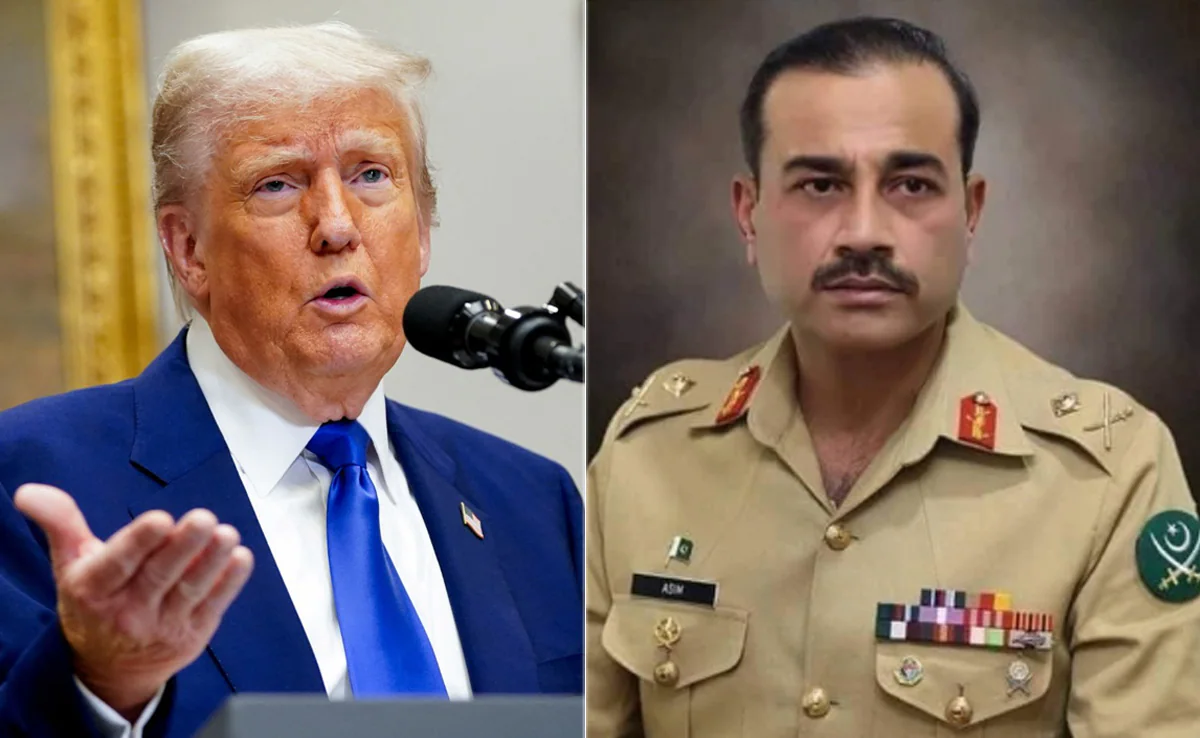
US President Donald Trump and Pakistan’s Army Chief General Asim Munir held a special and important meeting during a time when tensions are rising in the Asian region. The meeting was held on Trump’s invitation and was not open to the media. However, both sides have released official statements afterward, which states that the main topics were discussed
The meeting focused on the ongoing conflict between Iran and Israel, Pakistan–India relations, especially the Kashmir issue, the situation in Afghanistan and future US–Pakistan cooperation.
Pakistan has recently improved its strategic position in the region. It has shown strong ties with China and is the only South Asian country openly supporting Iran in its conflict with Israel. Meanwhile, Pakistan remains an important player in Afghanistan.
Why the Pakistani Army Chief was invited to the US?
Although Pakistan has an elected civilian government, important decisions—especially related to foreign affairs and security—are often handled by the military. That’s why General Asim Munir was invited to meet Trump instead of the Prime Minister, General Munir’s influence has grown recently. After tensions with India, he was given the title of Field Marshal. His meeting with Trump is seen as a sign of his importance in both Pakistani and international politics.
According to the Pakistan Army’s media wing (ISPR): General Munir thanked President Trump for helping to ease recent tensions between Pakistan and India. Trump praised Pakistan’s role in fighting terrorism. Both agreed to work together in the future, especially in: Trade, Technology Minerals and energy Artificial intelligence Crypto currency and regional peace efforts as well.
President Trump also appreciated General Munir’s leadership during difficult times. Munir invited Trump to visit Pakistan, and Trump reportedly accepted the offer in principle.
Why US former peace envoy to Afghanistan, Khalilzad is not trusting Pakistan’s army chief
Former U.S. diplomat Zalmay Khalilzad criticized the meeting. He said General Munir cannot be trusted and reminded the U.S. that Pakistan has supported groups that harmed American soldiers in the past. According to Khalilzad, General Munir may be trying to get U.S. support for his interests in Afghanistan, which he believes could be risky for America.
Though no official list of US demands was made public, reports suggest a meeting was held in Saudi Arabia earlier, where American officials spoke with top Pakistani leaders. During that meeting, the U.S. reportedly made four key requests: Pakistan should help the U.S. in counterterrorism operations when needed. Pakistan should slowly reduce its relations with China. Pakistan should recognize Israel after Saudi Arabia does. If the U.S. attacks Iran, Pakistan should support the U.S. instead of staying neutral.
These demands are similar to earlier U.S.–Pakistan arrangements during the Cold War and the War on Terror.
What could be expected in the future?
This meeting could mark the beginning of a new phase in US–Pakistan relations. In the past, Pakistan helped the U.S. during the Soviet-Afghan War and after 9/11. Now, with tensions involving Iran, India, and Afghanistan—and China expanding its role—the U.S. may again be looking to Pakistan as a key partner in the region.
Time will tell whether this leads to a long-term partnership or just another temporary agreement based on short-term goals.
Asia
China pledges aid and signs friendship treaty at Central Asia summit
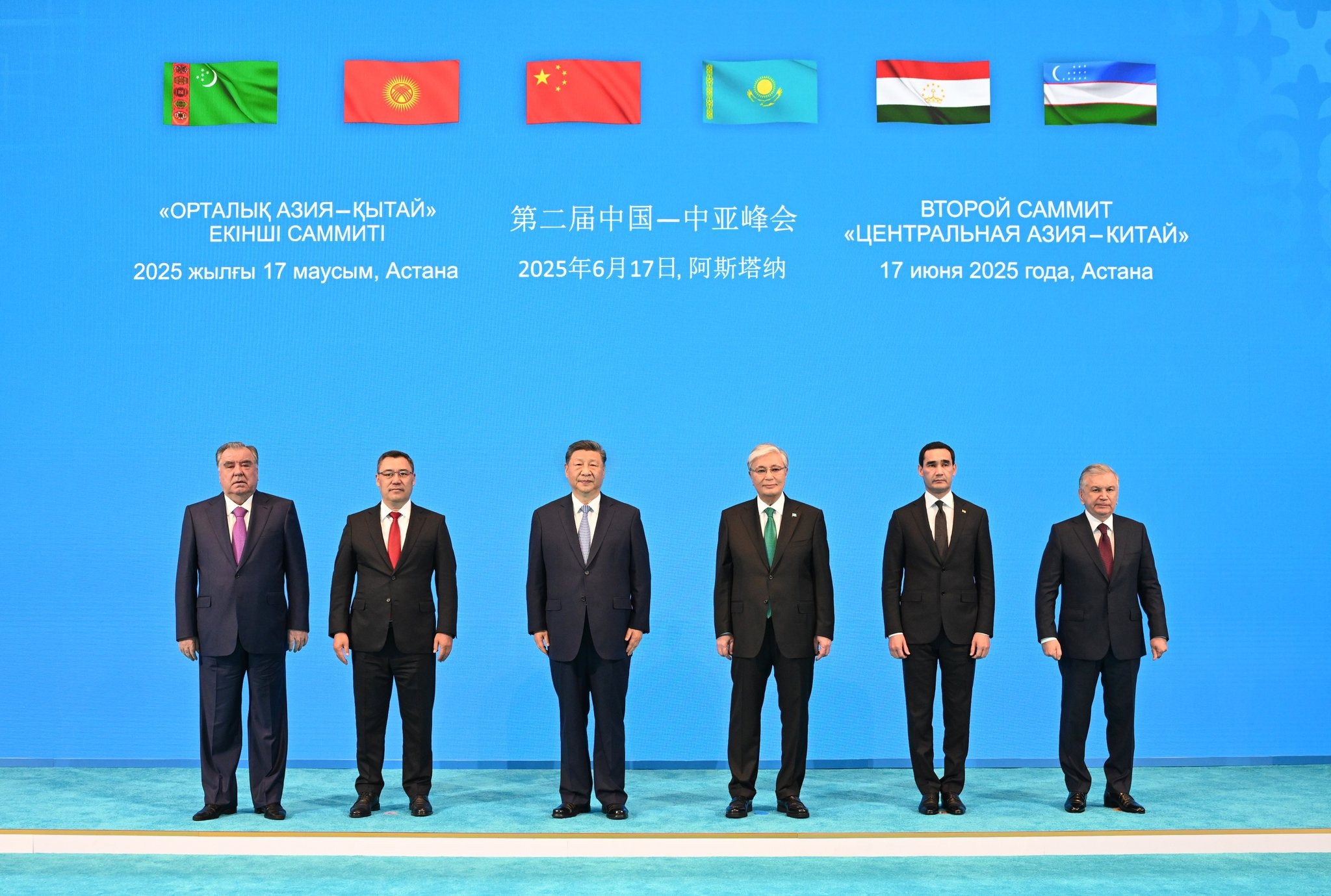
China concluded its latest engagement efforts in Central Asia on Tuesday by pledging 1.5 billion yuan (US$209 million) for livelihood and development projects in the region.
The six nations participating in the second China-Central Asia Summit also signed a historic permanent friendship treaty.
“China is ready to provide 1.5 billion yuan in grant assistance to Central Asian countries this year to support livelihood and development projects of common interest to each country,” Chinese President Xi Jinping stated in his opening address at the summit in Astana, the capital of Kazakhstan.
“Additionally, China will offer 3,000 training opportunities to Central Asian countries over the next two years.”
Xi described the signing of the Permanent Good-Neighborliness and Friendly Cooperation Agreement as a milestone in relations between the six countries, calling it “an innovative initiative in China’s neighborhood diplomacy and a contribution that will benefit future generations.”
China has signed similar agreements with Russia and Pakistan.
Xi also emphasized the need for cooperation in a world that has entered “a new period of turbulence and transformation.”
State news agency Xinhua quoted Xi as saying, “There will be no winner in a tariff and trade war. Protectionists and hegemonists will harm both others and themselves.”
“The world should not be divided, but united; humanity should not revert to the law of the jungle, but work to build a common future for mankind,” he added.
Xi also announced the establishment of three cooperation centers focusing on poverty reduction, educational exchange, and desertification control, as well as a trade facilitation platform under the China-Central Asia cooperation framework.
In a statement on Wednesday, the Chinese Foreign Ministry said that China and the Central Asian countries are eager to improve road and rail connectivity and plan to open more direct flights to and from China to increase mutual exchange.
China will consider simplifying visa procedures with the five Central Asian countries, while all parties will study the feasibility of opening consulates.
Together with Kazakhstan, Kyrgyzstan, and Tajikistan, China will accelerate the modernization of existing port facilities and assess the need for new ones.
The summit was the second of its kind, following the inaugural one held two years ago in Xian, China.
These efforts reflect a deepening of China’s relations with Central Asia, which have historically focused on areas such as transportation infrastructure.
The region is a key part of the Belt and Road Initiative, Beijing’s global development strategy, and China has invested heavily in energy pipelines, infrastructure, and mining projects in Central Asia.
However, China also wants to expand cooperation into sustainable development and renewable energy.
These investments were a major focus of Xi’s meetings with the leaders of the five Central Asian states.
During the meetings, Xi stressed the need to uphold multilateralism and the global trade order. This is part of Beijing’s effort to position itself as a more reliable partner following the US tariff war.
Meeting with Turkmen President Serdar Berdimuhamedov, Xi called for expanding gas cooperation and exploring opportunities in non-resource sectors.
Security was also on the agenda.
“The two countries should further strengthen law enforcement, security, and defense cooperation, jointly combat the ‘three forces,’ and enhance cooperation in cybersecurity,” Xi said, referring to “terrorism, separatism, and extremism.”
Beijing views these forces as threats to national and regional security, and Xi has repeatedly emphasized this stance in his meetings with Central Asian leaders.
While China’s presence in Central Asia has historically focused on economic investments, its influence in the security sphere is growing through joint counter-terrorism drills, training programs, and aid.
This is particularly true in Tajikistan, which shares a long border with Afghanistan, where China is concerned about terrorists returning to carry out operations in its western Xinjiang region.
In his meeting with Tajik President Emomali Rahmon, Xi called for deeper cooperation in law enforcement and security to combat the three forces.
He also called for increasing bilateral trade and investment and improving transportation infrastructure.
Rahmon said Dushanbe would expand cooperation in new areas such as new energy, green industries, and artificial intelligence, and would “strengthen coordination with Beijing for the Shanghai Cooperation Organisation (SCO) to play a greater role.”
The SCO is the main forum for relations between China and the landlocked region. This political, economic, and security bloc was founded in 2001 by China, Kazakhstan, Kyrgyzstan, Russia, Tajikistan, and Uzbekistan. Turkmenistan, reflecting its commitment to “permanent neutrality,” is the only Central Asian country outside the organization.
On Tuesday, Xi also held talks with Kyrgyz President Sadyr Japarov, describing relations between the two countries as being in “the best period in history.”
Xi said the construction of the China-Kyrgyzstan-Uzbekistan railway is a top priority, but new growth drivers such as clean energy, green mining, and artificial intelligence should also be developed.
The talks followed the signing of cooperation documents between China and the summit’s host country, Kazakhstan, covering trade, investment, technology, tourism, and customs.
Xi asked his Kazakh counterpart, Kassym-Jomart Tokayev, to accelerate cross-border railway projects and the improvement of port infrastructure.
Xi also stated, “Beijing and Astana should be strong supporters of each other in turbulent times.”
According to the Kazakh presidential office, Tokayev described relations between the two countries as stable and “not negatively affected by geopolitical challenges and turmoil or the international situation.”
-

 Diplomacy7 days ago
Diplomacy7 days agoFormer diplomat warns forcing Iran out of the NPT is the greatest danger
-

 Opinion2 weeks ago
Opinion2 weeks agoEuropean defense autonomy and Germany’s military role enter a turning point
-
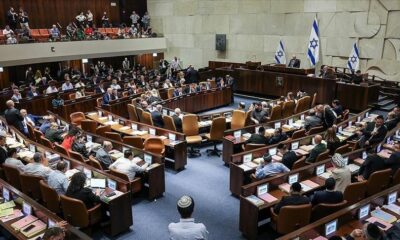
 Middle East1 week ago
Middle East1 week agoNetanyahu’s government survives no-confidence vote as Haredi crisis is delayed
-

 Asia2 weeks ago
Asia2 weeks agoJapan, US showcase B-52 bombers in nuclear deterrence dialogue
-

 Diplomacy7 days ago
Diplomacy7 days agoFormer CIA analyst says Israel used ceasefire talks as a trap
-

 Middle East4 days ago
Middle East4 days agoIran targets Mossad and Unit 8200 in missile attack on Tel Aviv
-

 Middle East23 hours ago
Middle East23 hours agoUS to launch major bombing campaign against Iran this weekend, Hersh reports
-
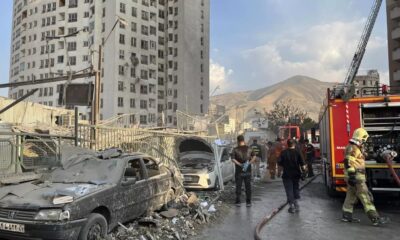
 Middle East1 week ago
Middle East1 week agoIsrael strikes Iran’s nuclear program, killing high-level commanders


